At the beginning of the 1957 season at el-Jib, the site of the biblical Gibeon, we had a modest and clearly defined objective. It was to discover the depth of the large rock-cut pool which bad been partly excavated in 1956 and about which there was a brief report in Vol. 21, No. I of this Bulletin. Obviously the pool had once been an impressive construction. It has a diameter of 11.50 meters and is equipped with a spiral stairway cut from the live rock. Forty-two of the steps had been uncovered in 1956, when a slice of the debris was removed down to a point about 10.50 meters below the rim. To remove the remainder of the stones and earth which bad been filled into this ancient cutting would require patience and considerable labor; but a minimum of supervision would be needed, since there were no walls and no floor levels to watch for and record.
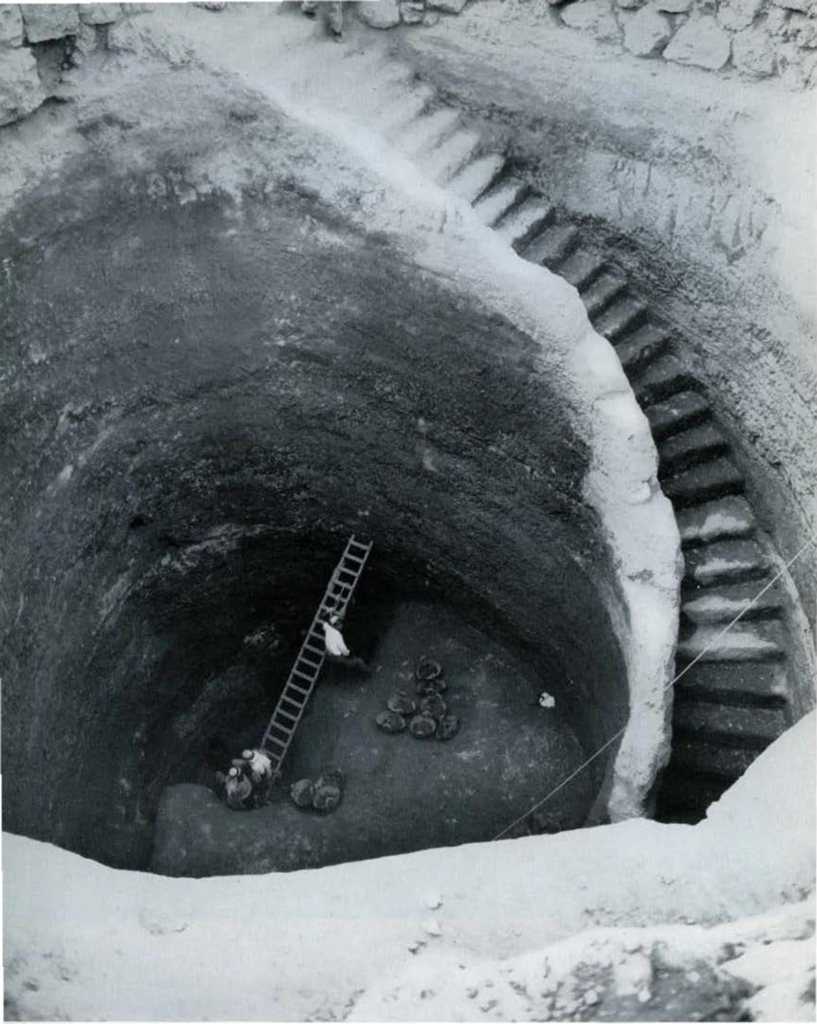
Image Number: 62640
However, as work actually got under way in the summer of 1957 the illusion that this was but a simple matter of moving dirt was soon dispelled by the discovery that the debris was remarkably rich with information – actually spelled out for us in Hebrew letters – about the economic life of Gibeon in the seventh century B.C. What had begun as a tidying-up operation turned out to be even more productive of historical information than had been the more ambitious excavation of the previous year.
Arriving in Jordan on July 21, we found that the partly excavated pool at el-Jib had not been filled in by the landowner. Professor H. Neil Richardson, director of the American School of Oriental Research in Jerusalem, and Dr. Awni Dajani, technical director of the Department of Antiquities, had already negotiated an agreement with the owner of the land on which we wished to work. On the second day after arrival we were able to begin the actual work of excavation.

Since it was possible to work only about forty men at one time in the restricted area of the pool, we decided to take advantage of the long summer days and make use of two gangs of laborers. One shift of forty men began at sun-up, 5:00 A.M., and worked until noon; a second came at noon and worked through until 6:30 P.M. Professor Fred V. Winnett, of the University of Toronto, who acted throughout the season in the capacity of assistant director, supervised one shift, while I took the other. For two days we had the assistance of Mr. Peter Parr, of the British School of Archaeology in Jerusalem, who kindly gave his services as supervisor. By utilizing every minute of daylight we were able in the period from July 23 to August 29 to get in what amounted to twelve weeks of work at the site.
THE EXPORT TRADE IN GIBEON WINE
In the 1956 season at el-Jib we had the good fortune of finding four inscribed jar handles in the tons of debris which we took from half the area of the pool down to a depth of 10.50 meters. It was reasonable to suppose that the other half of the filling might contain as many Hebrew inscriptions. To our surprise, fifty-two more examples of inscriptions on the same type of jar handle appeared-the largest number of Hebrew inscriptions to appear from any Palestinian site since the discovery of ostraca at Samaria in 1908-1910.
All but one of these new inscriptions came from about three meters of the debris of the pool (the levels of 4.45 to 7.60 meters below the rim of the pool). On one memorable day, August 2, no less than fifteen of these texts appeared in the basket of valuables which we carried back to Jerusalem at the close of the long day.
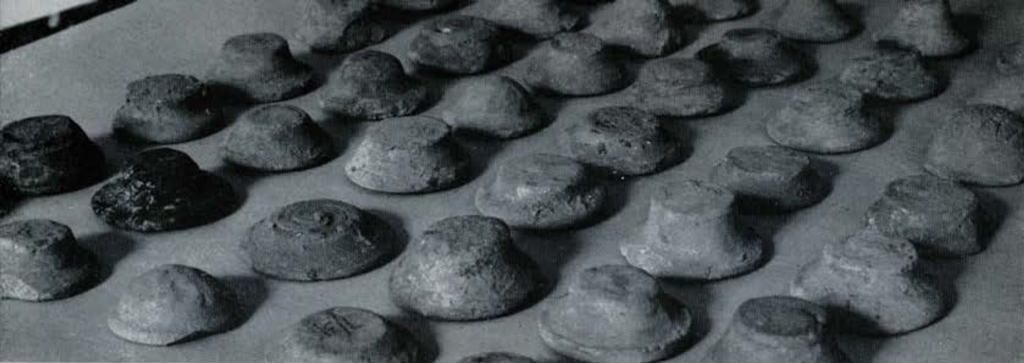
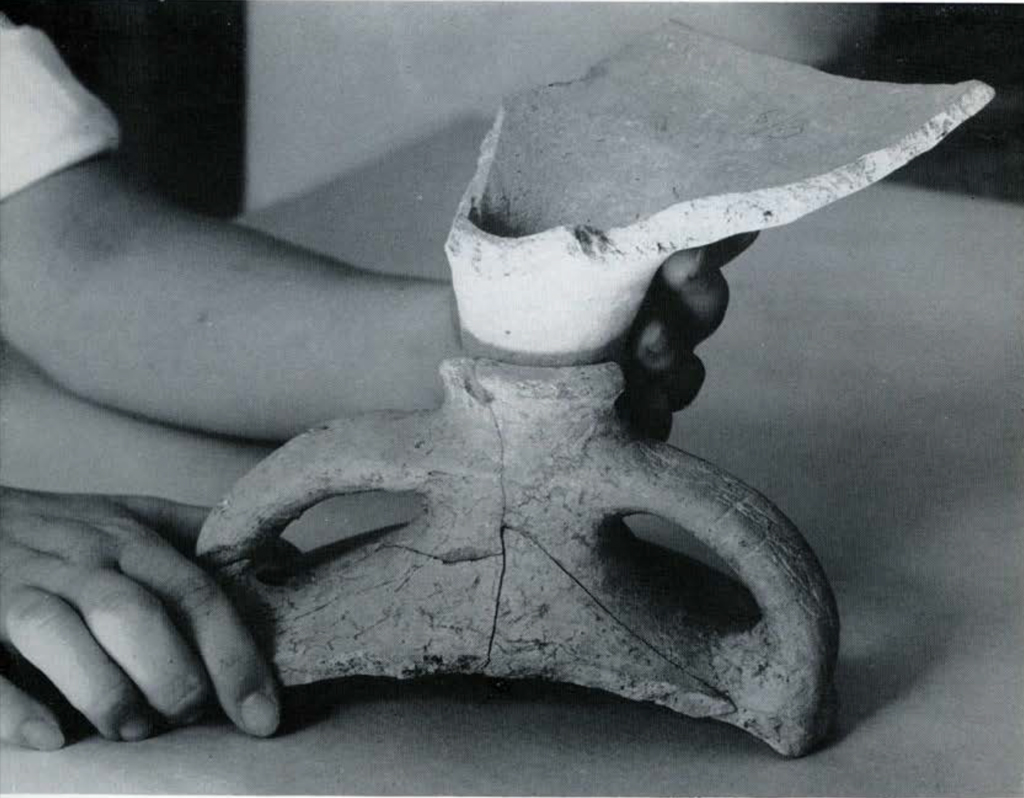
Museum Object Numbers: 60-13-22 / 60-13-137
To cope with this unexpected wealth of material culled from what was but city refuse, the staff had to be enlarged. Miss Linda A. Witherill, of the British School of Archaeology, was engaged to assist the cataloguer, Miss Asia G. Halaby, of Jerusalem. Mr. Subhi Muhtadi, a surveyor in Jerusalem, was employed to make the plan of the pool, and Mr. Hannah Safieh, a Jerusalem photographer, assisted with photographic work. Dr. Claus-Hunno Hunzinger, of the University of Gottingen, a member of the team working on the Dead Sea scroll fragments in the Palestine Archaeological Museum, kindly offered his services as epigrapher; and Pere Roland de Vaux, of the Ecole Biblique in Jerusalem, generously gave of his time in discussing some of the problems arising from the new inscriptions.
The principal result of the preceding season was the identification of the site of el-Jib with the biblical city of Gibeon, which is mentioned more than forty times in the Old Testament and which played an important role in more than six centuries of biblical history. This identification was made through the discovery of three jar handles inscribed with the name “Gibeon.” Yet there was no explanation available as to why the owner of these jars had scratched the name of his city on their handles. There was the remote possibility that these three “Gibeon” jar handles might have been carried anciently from a neighboring site, which was the true location of the biblical Gibeon.
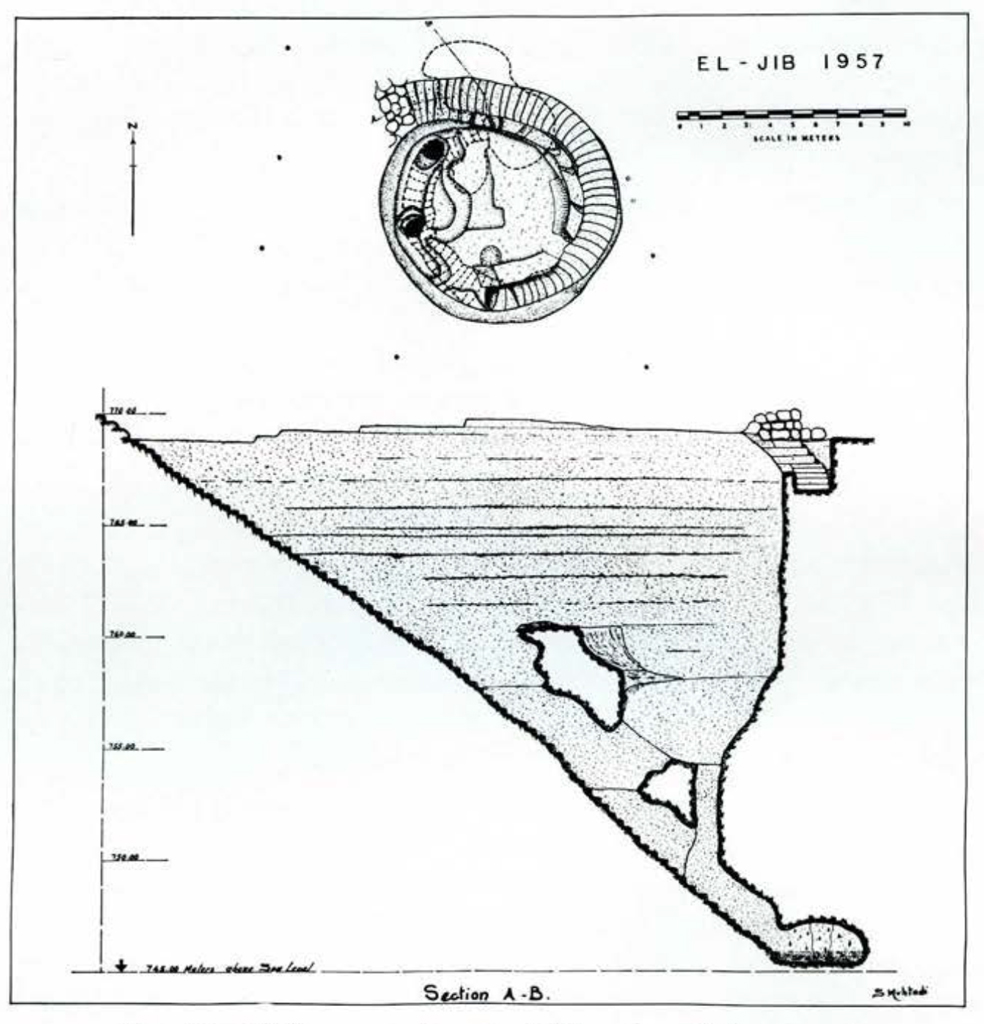
Image Number: 62708
The possibility of importation was soon dispelled in the 1957 season by the finding of twenty-four additional handles containing the name “Gibeon,” spelled out in good Hebrew. Following the place name there is usually the word gdr, which was misread in 1956 as gdd, and then a name of a person. Most common is Hananiah (son of) Nera. Hananiah is found frequently in the Bible as the name of various persons living in the general vicinity of Jerusalem. The most prominent is the false prophet Hananiah, son of Azzur, who is said to have been “of Gibeon” in Jeremiah 28:1. Twelve other persons bear the name of Hananiah.
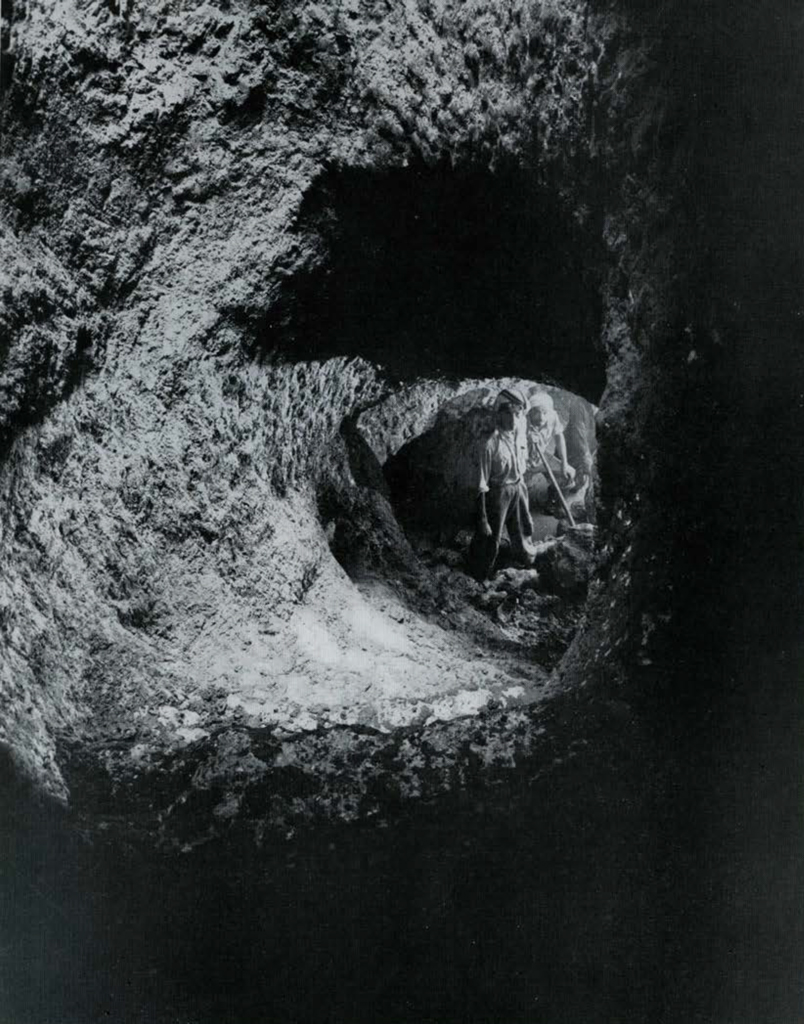
Another name which follows gdr is Azariah, also well known in the Bible. The famous king of Judah who reigned from 783 to 742 B.C. bore this name, as did more than a dozen other individuals mentioned in the Old Testament. A third name which appears frequently in the same formula on the jar bandies is that of Amariah, another common Hebrew name appearing for eight individuals mentioned in the Bible.
The inscribed jar handles generally follow the formula: “Gibeon, the gdr of Hananiah Nera/Azariah/Amariah.” But what is the meaning of gdr? In the Hebrew Bible the word appears thirteen times and bas been translated as “fence,” or “wall.” However, in four of these instances (Num. 22:24; Isa. 5:5; Prov. 24:31; Ps. 80:13) the “fence” is associated with a vineyard. Perhaps the best clue to the specific meaning of the term gdr in the context of the el-Jib handles is found in numbers 22:24-25, a part of the famous story of Balaam and his ass. It reads: “Then the angel of the Lord stood in the narrow way of the vineyards (krmym) a gdr on this side and a gdr on that side. When the ass saw the angel of the Lord she pressed herself against the wall (gyr), and pressed the foot of Balaam against the wall; and he smote her again.” Here it seems that a gdr is a section of the vineyard, a walled plot within the general area of the vineyards, possibly the property of an individual marked off by a wall from the plot of his neighbor. This meaning fits the use of the term in the frequently recurring formula of the jar handles. Thus we may translate the inscriptions: “Gibeon, the walled vineyard of Hananiah Nera/Azariah/Amariah.”
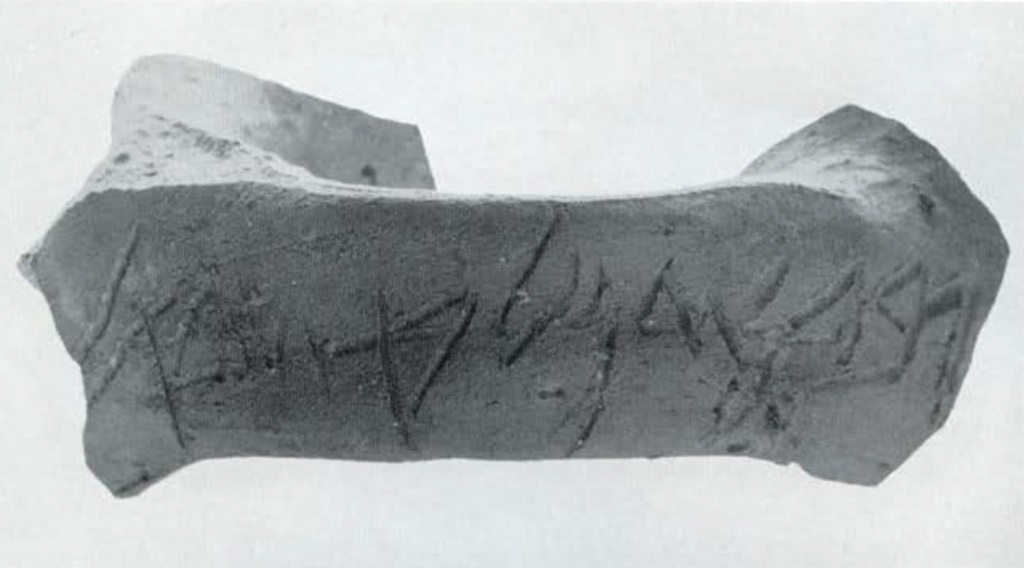
No whole jars to which these handles belonged were found. However, from the best examples of fragments it is possible to estimate that the jars held approximately 6 gallons of liquid. The mouth of the jar is only about 4 ems. in diameter. It is obvious that this type of vessel could only have been intended to hold a liquid, such as water, oil, or wine. More than forty clay stoppers made expressly for the mouths of the jars were found in the context, and a funnel which fits exactly the opening was recognized. These provisions for filling and sealing the contents seem to exclude the possibility that the jars were intended for water. The association of the word gdr with vineyards tips the scales of probability in favor of wine rather than oil as the contents. The placing of the name of the town, Gibeon, on the handle of the wine jar would indicate that the contents were intended for export and not for local consumption.
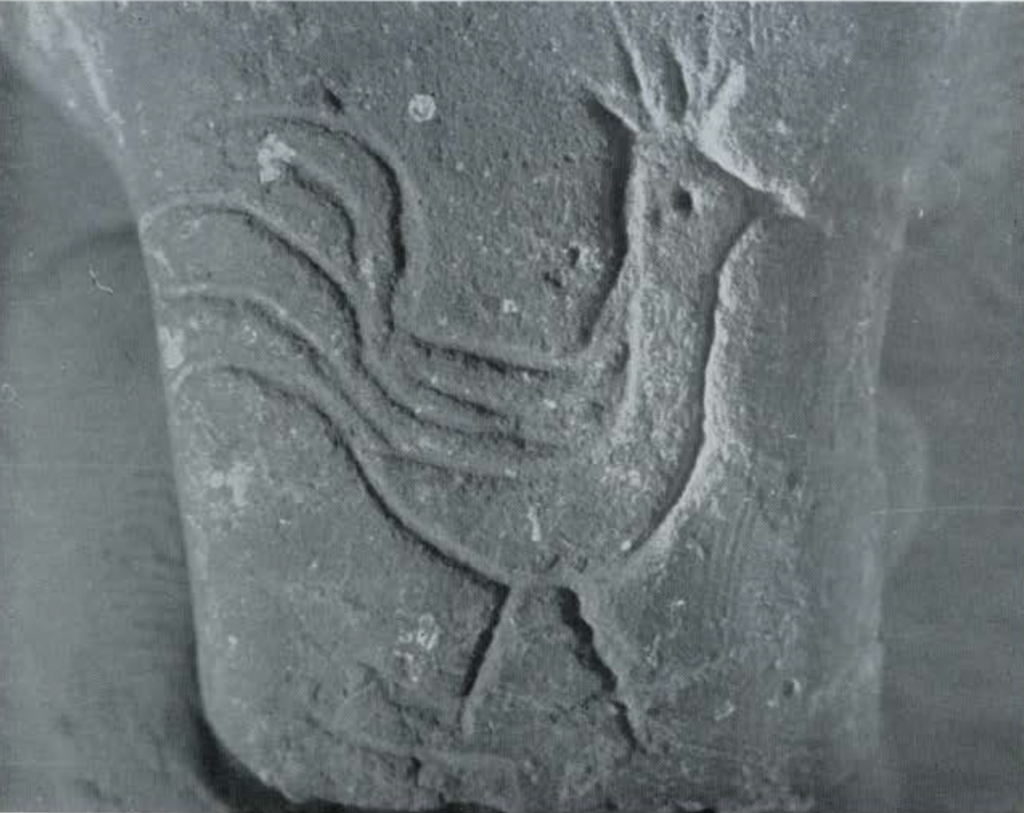
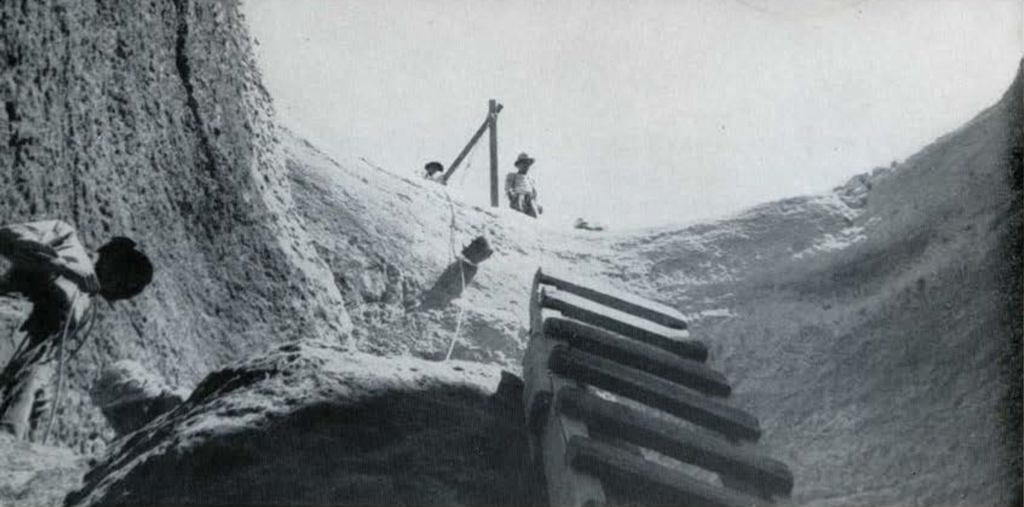
Even without this detailed evidence we might have guessed that Gibeon wine had been a famous product since fine grapes are today grown in the village of el-Jib. Apparently in the seventh century B.C. Gibeon was a kind of ancient “Bordeaux” which exported its famous wine to neighboring cities, where it was purchased under the guaranteed labels of the vineyards of Hananiah Nera, Azariah, and Amariah. It is not impossible that with further excavations in the neighboring cities examples of the Gibeon jar handles may be found there. It is very likely that the area to the south of the pool, from which the debris came, contains the remains of the wineries of Gibeon. At least, further excavation to the south of the pool should be a promising venture.
In addition to the names mentioned above there appeared two perplexing names, Domla and Shubel, which are new to Hebrew onomatology.
GIBEON’S WATER SYSTEM
The pool itself was a remarkable engineering project, which could only have been carried out at great expense or by means of slave labor. Its purpose, like that of the stepped tunnel cleared in 1956, was to provide the city with an access to the water available deep within the hill, without exposing its inhabitants to the hazard of an attack from an enemy outside the city’s walls. The construction of this access had been begun ambitiously. A cylindrical shaft, 11.50 meters in diameter, had been cut from the solid rock to a depth of 10.50 meters and a spiral stairway had been left, beginning at the north side and winding downward in an easterly direction.
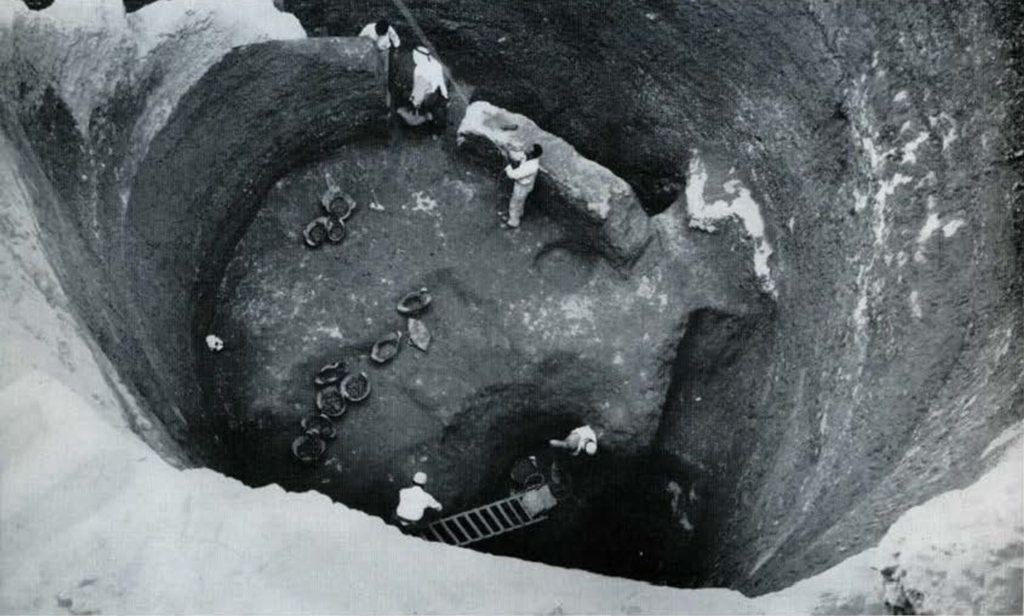
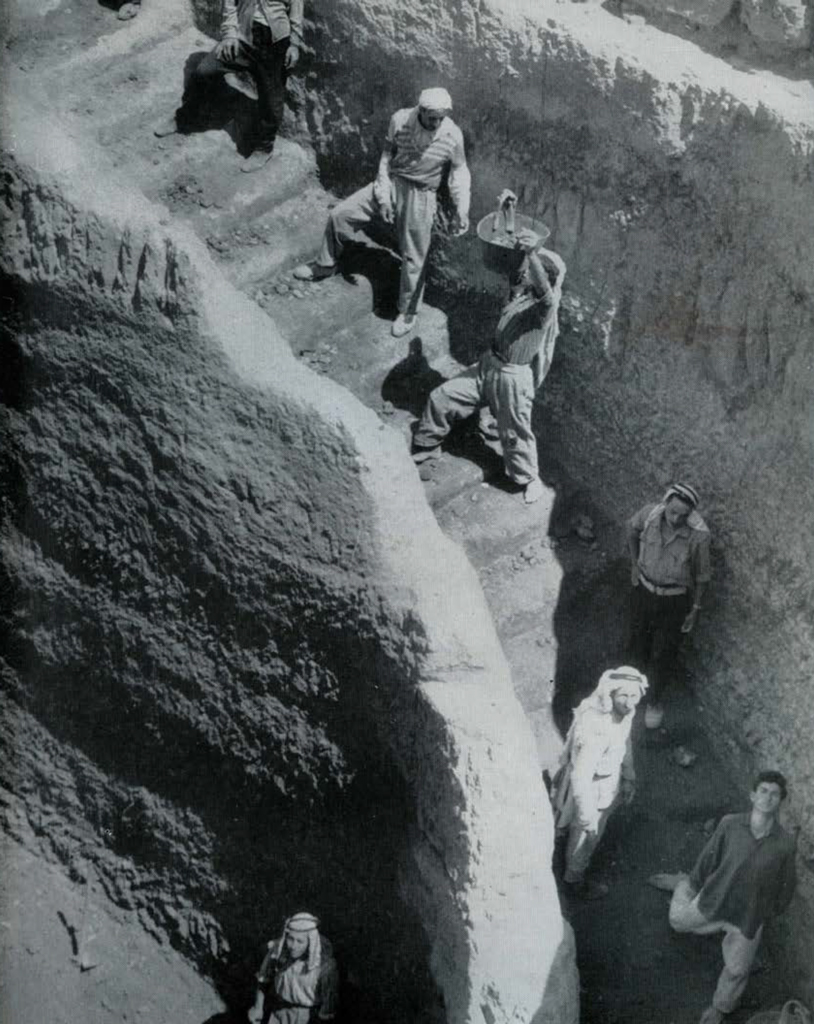
For some unknown reason, the workers ceased at this level to quarry the rock from the cylindrical cutting and proceeded downward by means of a stepped tunnel. Following the line of the cylindrical cutting above, they tunneled in a circular fashion until they struck the water level, 14 meters below the floor of the cylindrical pool. At the bottom of 79 steps they carved out a kidney-shaped chamber, approximately 3 by 7 meters, in which water could collect. To provide light for the long passageway of the tunnel they cut two shafts upward to the floor of the cylindrical pool, which was open to the sky.
When we broke through to the water chamber at the bottom of the stairs we found water collected in it and the only whole jar of the entire excavation lying abandoned in the water and mud which partially filled the reservoir.
Just when the pool was cut, it is difficult to say at present. It is, however, now clear that it was filled in about 600 B.C., to judge from the debris which came from it. It is probable that a conqueror of the city sought to make the site uninhabitable by filling the pool with boulders and smaller stones. Later, when the settlers came back to rebuild, they decided to make the hole a dumping place for the ashes and rubble of destruction rather than to go to the trouble of removing the tons of debris with which the conqueror had choked the water system. Thus it may well have been that this remarkable engineering project of the city water system became the city dump and its existence completely lost sight of until 1956, when we discovered it.

